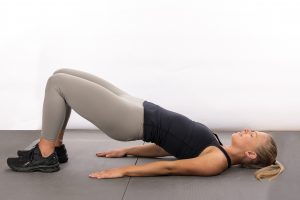Cancer and Exercise
Longevity Exercise Physiology and Personal Training Edgecliff, Lindfield, Marrickville, Randwick, Drummoyne, Balmain and Bella Vista today look at the benefits of exercise on cancer and how it can help cancer treatment.
Many of you may have read the recent article or watched the ABC segment on the great benefits of exercise on cancer that was released last week. If you missed it, the story describes the exercise journey of two women who both battled cancer and how they are now using exercise to alleviate effects of treatment and lead healthy lives.
Most Australian’s have family members or at least know people who have fought all different types of cancer. That’s why recognising and raising awareness of the benefits of exercise on these individuals is so important- so that exercise is appreciated as a necessary prevention and treatment strategy throughout Australia and the world!
Most importantly exercise is proven to prevent cancer and reduce tumour growth. Recent evidence suggests that women who engaged in regular physical activity before their breast cancer diagnosis and after their cancer treatment were 40% less likely to suffer from reoccurring cancer or die from the illness when compared to those who do not exercise (Cannioto et al., 2020). Reduced risk of cancer may be related to various changes as a result of regular exercise:
- Regulating levels of hormones, specifically sex hormones such as oestrogen
- Regulating insulin production (high levels of insulin secretion have been associated with development and progression of cancers
- Improving immune function
- Reduction in inflammation
- Prevention of obesity and maintenance of a healthy BMI and fat percentage

Confidence and mental wellbeing can significantly reduce as a result of cancer diagnosis and subsequent treatment. During exercise the body releases “Feel good” hormones including endorphins, serotonin and dopamine, which lift mood and reduce stress and pain.
Fatigue is one of the most common reported complications as a result of cancer treatment. Many people often lose strength and endurance and may find it harder to complete regular activities of daily living. Regular exercise has the ability to reduce fatigue by increasing cardiovascular and muscular fitness, allowing more activities to be completed throughout the day with a lessening sense of fatigue and lethargy.
Current exercise prescription for those wanting to prevent or reduce risk of reoccurring cancers is at least 60 minutes of moderate activity or 30 minutes of vigorous activity every day. Exercise may be broken up into smaller episodes of at least 10 minutes each, which may be considered by those who are undergoing treatment.
The two main take homes of this exercise and cancer blog are:
- Spread the word- we want exercise to be recognised by everyone in Australia and the world as one of the main ways to prevent and alleviate negative effects of cancer and treatment!
- Get active- Exercise can do some pretty amazing things to the body. The sooner you start to become physically active the healthier you’ll feel in your skin.
Consult a Longevity Exercise Physiologist if you think you or anyone you know would benefit from regular supervised exercise.
If you want to read the article mentioned above: Link: https://www.abc.net.au/news/2020-11-11/study-shows-exercise-helps-cancer-treatments/12867650
References
Cannioto, R. A., Hutson, A., Dighe, S., McCann, W., McCann, S. E., Zirpoli, G. R., … & Unger, J. M. (2020). Physical activity before, during and after chemotherapy for high-risk breast cancer: relationships with survival. JNCI: Journal of the National Cancer Institute.
Written by Shannon Coolican

